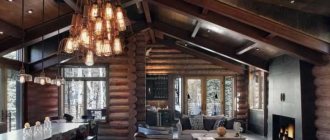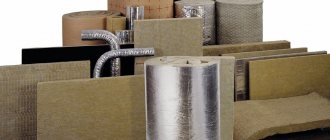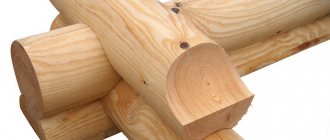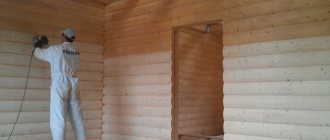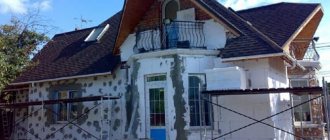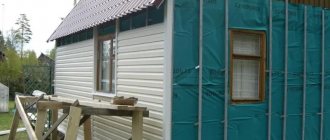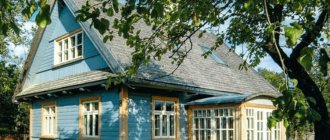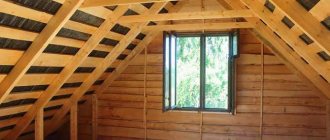The modern market offers a wide selection of different building materials, but wood is still one of the most in demand. It is difficult to imagine a village in which there would not be a house made of timber. Every owner, having built or purchased a similar property, once asks the question: how to paint the inside of a wooden house?
This is necessary to create the foundation of the building's interior and prevent pests from entering. How to paint a wooden house? Next, we will consider the options for various coatings with which you can paint your house.
With bright window frames
Windows are traditionally considered the eyes of the house.
Frames, shutters, and slopes give the facade a finished look and make it more neat. Traditionally, window frames are white, less often they leave a wood grain or are darkened. Painting the trims red, purple, yellow is a bold move, but very interesting. At a minimum, the facade will attract the eye.
What color to paint the outside of a wooden house: photos of fashionable solutions
Depending on what product you use to paint wooden facades, you can completely change the color or emphasize the natural color of the wood.
Emphasizing wood texture
Not to shy away from the idea of environmental friendliness, to show the beauty of natural materials is the natural desire of most home owners. You can emphasize the texture of wood using translucent or glazing azures. They are quickly absorbed into the porous structure of wood, protecting it from biological influences and revealing the natural pattern more clearly. At the same time, the tree continues to “breathe.”
Preparatory work
Before painting, remove the old coating and sand the boards.
Painting the inside of a house begins with preparing the surfaces. A wooden wall, by its nature, remains porous. In order for the paint to lay evenly on it, the following is required:
- The walls are cleaned of dust and dirt.
- Remove the old finishing layer, if any. The paint is washed off or removed using a sanding machine.
- They inspect the walls. If mold or rotten spots are found on the wood, these places are cleaned with a wire brush. Then the areas are treated with antiseptic impregnations or primers to protect the wood from fungi and mold. Boards that are more than half rotten are replaced with new ones.
- Nail heads and remnants of other fasteners are removed.
- Fallen knots, cracks, and gaps are filled with plaster mixtures with sawdust. After drying, the areas are smoothed with sandpaper.
- Before painting wooden walls inside and outside the house, the surface is impregnated with a primer. This composition improves the degree of adhesion of paint to wood.
Other measures may be necessary, for example, leveling or sanding walls, additional treatment with antiseptics or bleaches.
"Silvering" of the facade
Facades finished with pine boards have a number of features. Under the influence of direct sunlight, hygroscopic substances, so loved by mold and fungi, are washed out of the top layer of wood. The surface of the facade first darkens, and a little later acquires a silvery tint. You can speed up the “silvering” process by regularly treating the boards with leaching solutions.
What paint should I use?
As you know, manufacturers produce paints suitable for both interior and exterior use. In the second case, a higher quality material is created that can withstand moisture and temperature changes. Now there are requirements for facade paint for a wooden house, including:
- Good adhesion to wood.
- Hydrophobicity (high-quality protection of the material from rotting).
- Resistance to external factors (rain, snow and melt water, wind and dust).
- Chemical inertness to alkalis and acids.
- Resistance to impacts, chips and scratches (high mechanical strength).
- Resistance to low and high temperatures, their changes and ultraviolet sunlight.
- Low dirt retention and ease of maintenance.
- Maintains elasticity.
- Excellent vapor permeability.
- The ability to maintain an attractive appearance and rich color for a long period of time.
Pastel shades
Warm pastel shades, in comparison with bright colors, do not tire the eye so quickly, so they are more often used in the exterior decoration of residential buildings. Delicate yellow, mint and milky shades fade more slowly in the sun and harmonize equally well with summer greenery and snowy landscapes.
When choosing materials for exterior decoration, it is important to remember the uniformity of style. The color of the walls should be in harmony with the roof and the shade of additional elements. It is much easier to choose tiles for facades in pastel colors, which are traditionally dark in color.
Photos of painted wooden houses from the outside
A wooden facade is one of the oldest ways to decorate the exterior of a house. The popularity of this solution is not subsiding; currently it is a fashionable solution to make part of the facade from this material. Despite all the advantages of this method, natural material requires constant and careful care. Impregnation and painting of boards with special means is necessary to protect them and improve their appearance. Let's consider effective solutions that will give the desired result.
Black color on the facade
The black decoration of the façade of the house is undoubtedly a bold step, indicating the originality and extravagance of the owner. This building has a special style and does not go unnoticed. It may seem that black will make the decoration gloomy and cold, but in combination with white frames and doors, dark facades look very cozy.
A wooden house painted black places special demands on the surrounding landscape. The design of the site should be in harmony with the restrained, often minimalist style of the building. Colorful flower beds and homemade garden sculptures made from recycled materials are strictly contraindicated.
Hand painted
For many, updating the façade is an opportunity to show their individuality. The exterior does not have to be boring and restrained. If your soul requires color, brightness and experimentation, it’s time to take up your brushes. As a source of inspiration you can use:
- National painting;
- Geometric and floral patterns;
- Abstract impressionist paintings, etc.
Useful recommendations for purchasing paint and painting
If you are going to paint the surface yourself, you should study the advice of professionals. Before purchasing, look at the expiration date of the paint; high-quality compositions must have a quality certificate; if it does not exist, then it is better to abandon this product.
It is advisable to paint at temperatures of +22-25 degrees. The preparatory stage should be carried out carefully; the final result depends on the quality of preparation.
Don’t forget to paint the end sections of timber and logs facing the room. It is advisable to test the color of the product before painting by applying it in an inconspicuous place; after drying, the color may change slightly.
It is advisable to paint at temperatures of +22-25 degrees.
White base
White color both indoors and on the facade looks neat and aesthetically pleasing. The building looks fresh, and the decoration is in harmony with the entire palette of surrounding shades. Often trims, doors, railings and other decorative elements are painted white.
Exteriors look interesting, where white is given not an auxiliary, but a leading role. This option is ideal for houses with few windows; it makes the space brighter and more comfortable.
Snow-white facades become especially harmonious in combination with contrasting dark tiles. Black window frames add style and originality.
Companion colors
The slogan “The more the merrier!” It is extremely rarely combined with the idea of high-quality and stylish design, but sometimes experiments with multi-colors still bring successful results. Using a little imagination and knowledge from the field of color, you can turn a wooden house into a real art object. You should choose one color as a basis, and take several neutral or related shades to accompany it.
Bright, cheerful colors, skillfully combined with each other, add liveliness and originality to the exterior.
Monochrome
Houses with the same color of facade and roof look unusual. The tone may be slightly different, or it may be completely the same. It is better to choose a shade from a palette of dark and deep colors.
Plain facades always harmoniously coexist with the lush greenery of the surrounding landscape. The house becomes a stylish and spectacular accent that attracts the eye.
Landscape camouflage
You can achieve maximum unity with the natural environment by painting your house in the color of the surrounding foliage. In summer, green facades look wonderful, with the onset of autumn - yellow and orange.
For greater harmony, you can add natural stone to the facade decoration, and it is better to leave the tiles as inconspicuous as possible.
Dollhouse effect
If you want to add a little magic and spontaneity to the exterior, choose pink, soft blue or purple paint. White frames, platbands, support pillars, and railings will add even more doll-like quality.
Carved roof decorations and patterned balusters on the porch will add lightness. The updates will definitely appeal to its little inhabitants, and sometimes it’s useful for adults to be transported back to childhood.
Painting by floor
The facades of houses to which a floor has been added often have a combined finish. This move is used to save money or when it is impossible to select completely identical material.
Color can be used to highlight the space of the gable, the veranda or the entire floor. It is better to choose warm, deep, slightly muted colors. Be sure to pay attention to their compatibility.
Whatever painting option the home owners choose, updating the facade always benefits it. Work should be carried out every 4-5 years. This way the wood will last longer, and the appearance of the house will delight the residents again and again.
Why do you need to paint?
Many owners do not paint the walls of their house. Logs look quite aesthetically pleasing, giving the premises a colorful look, but special processing of wooden structures is still necessary. This is done for a number of reasons:
- The use of specialized mixtures will help reduce the risk of fire.
- Preventing the process of rotting. By covering the wood with special solutions, you can preserve it in its original form for a long time.
- The paint coating prevents the appearance of various mechanical defects.
- Coloring will hide minor imperfections in the material.
- Applying a paint coating will prevent the appearance of various wood beetles and parasites in the wood.
